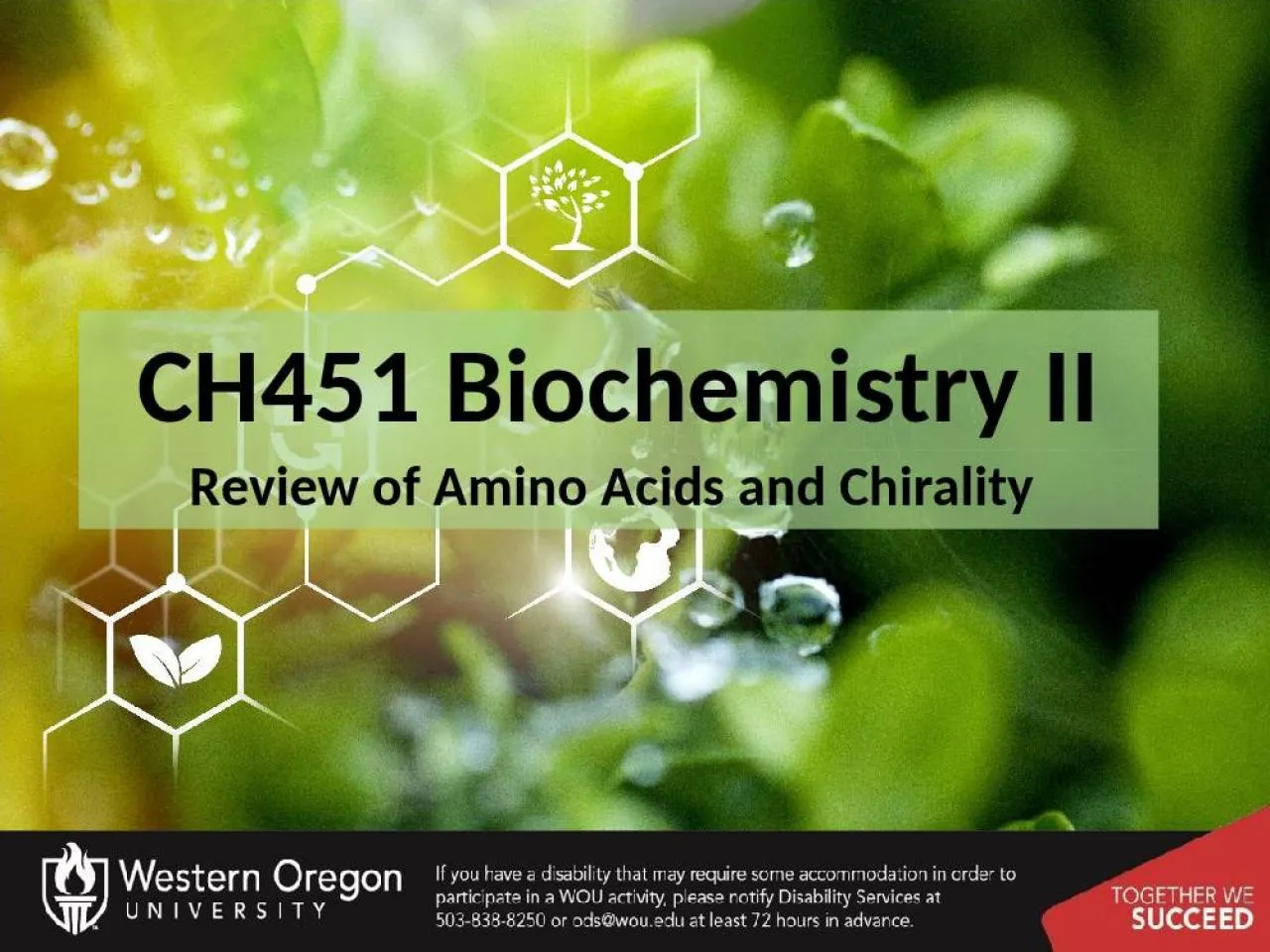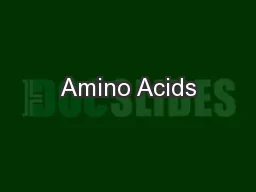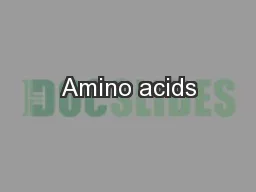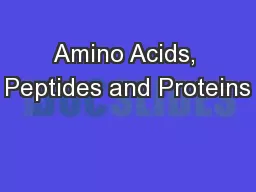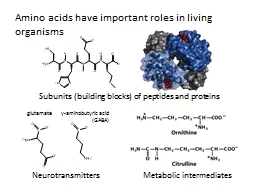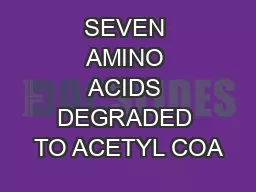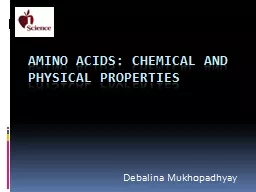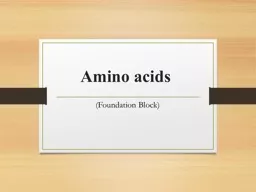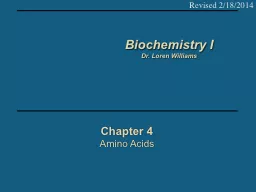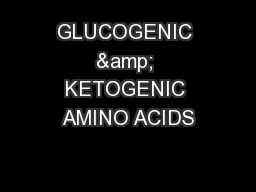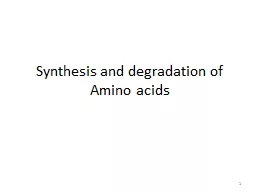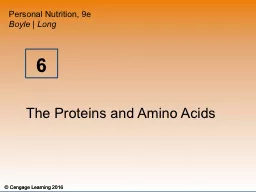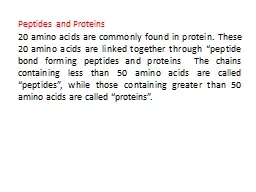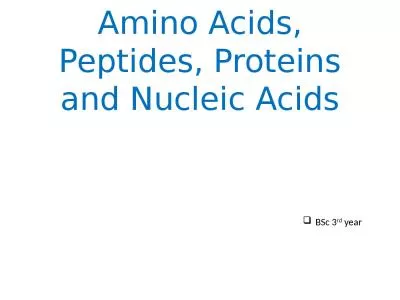PPT-CH451 Biochemistry II Review of Amino Acids and Chirality
Author : leah | Published Date : 2022-02-14
Chirality Chiral and Achiral Molecules A chiral molecule is one that is not superimposable with its mirror image Carbon becomes chiral when it has four different
Presentation Embed Code
Download Presentation
Download Presentation The PPT/PDF document "CH451 Biochemistry II Review of Amino Ac..." is the property of its rightful owner. Permission is granted to download and print the materials on this website for personal, non-commercial use only, and to display it on your personal computer provided you do not modify the materials and that you retain all copyright notices contained in the materials. By downloading content from our website, you accept the terms of this agreement.
CH451 Biochemistry II Review of Amino Acids and Chirality: Transcript
Download Rules Of Document
"CH451 Biochemistry II Review of Amino Acids and Chirality"The content belongs to its owner. You may download and print it for personal use, without modification, and keep all copyright notices. By downloading, you agree to these terms.
Related Documents

